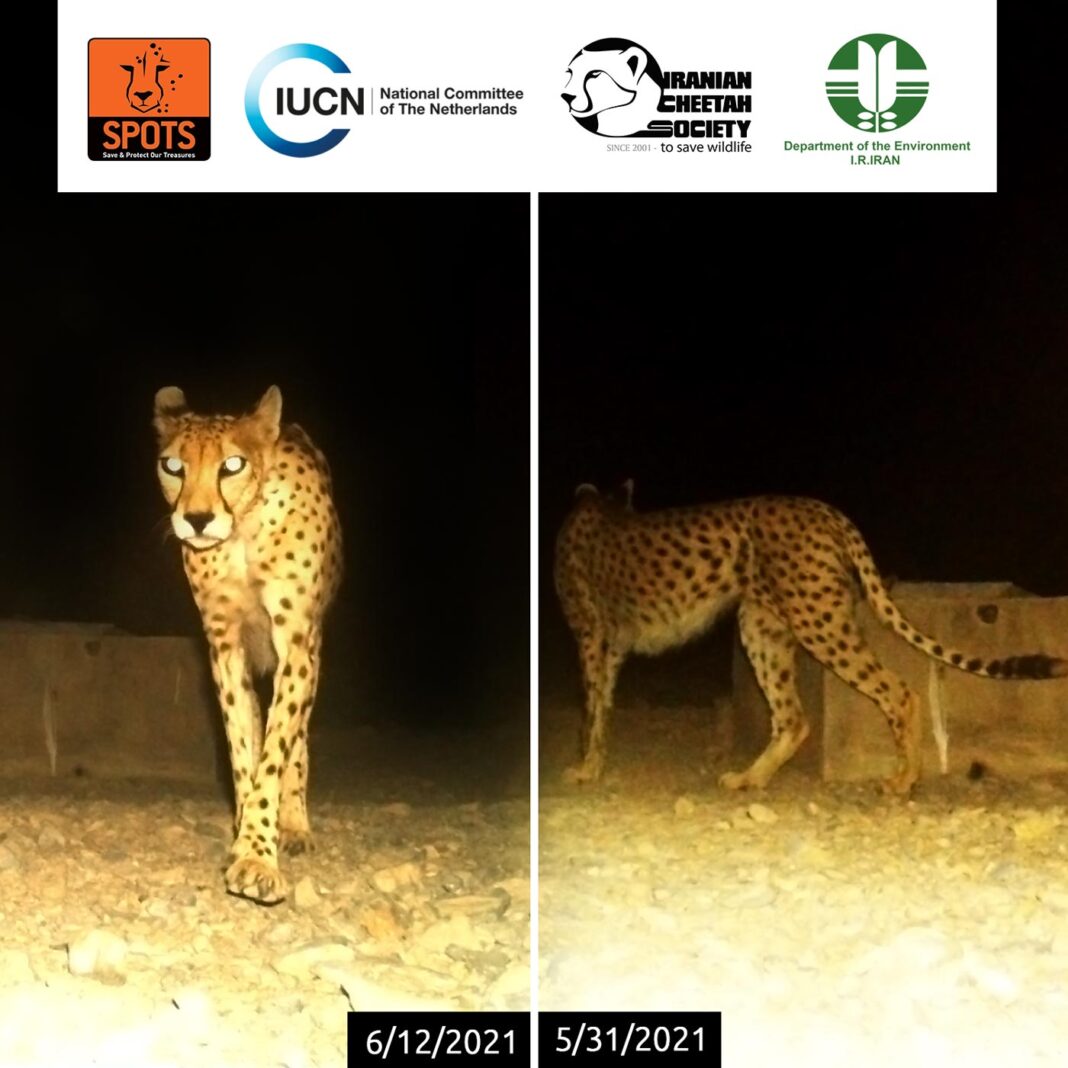
+- WildFact (https://wildfact.com/forum)
+-- Forum: Information Section (https://wildfact.com/forum/forum-information-section)
+--- Forum: Terrestrial Wild Animals (https://wildfact.com/forum/forum-terrestrial-wild-animals)
+---- Forum: Wild Cats (https://wildfact.com/forum/forum-wild-cats)
+---- Thread: Asiatic cheetah (Acinonyx jubatus venaticus) (/topic-asiatic-cheetah-acinonyx-jubatus-venaticus)
RE: Asiatic cheetah (Acinonyx jubatus venaticus) - Acinonyx sp. - 08-27-2021

*This image is copyright of its original author
Cheetah spotted in Touran National Park in 2021, photo by Iran Cheetah Soceity
RE: Asiatic cheetah (Acinonyx jubatus venaticus) - Acinonyx sp. - 10-27-2021
Beautiful young asiatic cheetah

*This image is copyright of its original author
RE: Asiatic cheetah (Acinonyx jubatus venaticus) - Acinonyx sp. - 10-28-2021
Harb the female asiatic cheetah and family

*This image is copyright of its original author

*This image is copyright of its original author
RE: Asiatic cheetah (Acinonyx jubatus venaticus) - Matias - 01-11-2022
The subspecies has collapsed... rapidly heading towards functional extinction.
There is no other way but to collect them all in an assisted reproduction program. Where genetic science in common with conservation genetics can find ways to keep the subspecies alive. But, I don't believe in Iran's interest in opening paths and putting into practice this approach dependent on external agents (funding and wildlife professionals).
It remains to wait for the practical measures to be taken.
For the great project of reintroduction of the Cheetah into Indian lands, it could be an important impetus to deflect forces to the contrary.
"biologically, cheetahs are both an African and an Asian asset, so the species should be returned to those who pave the way for their return."
There is no other way but to collect them all in an assisted reproduction program. Where genetic science in common with conservation genetics can find ways to keep the subspecies alive. But, I don't believe in Iran's interest in opening paths and putting into practice this approach dependent on external agents (funding and wildlife professionals).
It remains to wait for the practical measures to be taken.
For the great project of reintroduction of the Cheetah into Indian lands, it could be an important impetus to deflect forces to the contrary.
"biologically, cheetahs are both an African and an Asian asset, so the species should be returned to those who pave the way for their return."
RE: Asiatic cheetah (Acinonyx jubatus venaticus) - Lycaon - 01-22-2022
@Matias
Here is a clarification on that report.
https://www.wildlife.ir/en/2022/01/16/are-there-only-12-asiatic-cheetahs-left-in-iran/
RE: Asiatic cheetah (Acinonyx jubatus venaticus) - Lycaon - 05-02-2022
Some fantastic news.
https://www.wildlife.ir/en/2022/05/01/first-captive-born-asiatic-cheetahs-in-iran/
RE: Asiatic cheetah (Acinonyx jubatus venaticus) - Matias - 02-28-2023
Last of Iran’s endangered Asiatic cheetah cubs in captivity dies
There's not much to comment... only regret!
RE: Asiatic cheetah (Acinonyx jubatus venaticus) - TheHyenid76 - 03-21-2024
Videos of Asiatic Cheetahs hunting prey
Animal behavior informed by history: Was the Asiatic cheetah an obligate gazelle hunter?
Abstract
Understanding key ecological adaptations, such as foraging, when a predator is almost extinct is complex. Nonetheless, that information is vital for the recovery of the persisting individuals. Therefore, reviewing historical, ethnobiological and recent records can assist in exploring the species behavioral ecology. We applied this approach to Asiatic cheetahs (Acinonyx jubatus venaticus), which once roamed most west and central Asian countries but now is confined to a few dozens in Iran, at historical (pre-1970) and recent (post-1970) scales. We addressed a widely popular perception that Asiatic cheetahs were subjected to prey shifts from gazelles (Gazella spp.) in open plains areas to urial (Ovis vignei) in mountains because of gazelle populations declines due to anthropogenic influences. We also quantified recent prey choice of Asiatic cheetahs and their behavioral plasticity in foraging different prey species types. Although ethnobiological and historical records suggested that gazelle species were the main prey for cheetahs across their Asian range. However, urial were also commonly reported to be hunted by cheetahs across their historical Asian range, showing that the predation on mountain ungulates is not an emerging hunting behavior in Asiatic cheetahs. We found spatiotemporal plasticity in recent hunting behavior of cheetahs with selective predation on adult urial males. There was temporal overlap in hunting times for plains dwelling versus mountain ungulates, albeit with some minor differences with morning mostly for gazelles while the predation on mountain ungulates was predominantly post-midday. We provided three management implications for the recovery and restoration of cheetahs in Asia. Our work highlighted the importance of historical studies in informing the behavioral ecology of rare species.
Animal behavior informed by history: Was the Asiatic cheetah an obligate gazelle hunter?